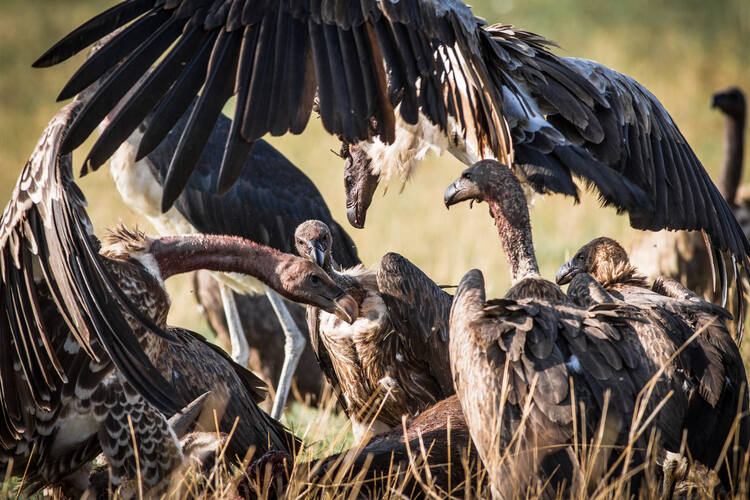
A new study has revealed that 88 per cent of African raptor populations living in savannah grasslands have declined over the past fifty years
By
With its banshee-like wail, bloodied face and fondness for eating corpses, it can be hard to love a vulture. But these birds, like other raptors (birds of prey that hunt and feed on other vertebrates), play a critical role in African savannah systems. Without the undertakers of the avian world, the grasslands would be littered in the slowly decaying bodies of dead animals.
But, is Africa heading toward a future without its Halloween birds? According to the results of a new study by led by Phil Shaw from the School of Biology at the University of St. Andrews, in Scotland, and Darcy Ogada, The Peregrine Fund’s Africa programme director, and published in the journal Nature Evolution & Ecology, there’s a very real chance this nightmare scenario might come to pass with populations of many of the species studied experiencing steep population declines since 1969.
To come to these startling results, the team measured changes in the numbers of 42 species of birds of prey in Botswana, Burkina Faso, northern Cameroon, Kenya, Mali, and Niger. The researchers conducted hundreds of surveys by driving slowly along 100km stretches of roads and recording every raptor they saw. Those same roads had already been surveyed by other scientists as long ago as 1969, and by placing the new survey results alongside older sets of results, the researchers were able to work out how populations have fared over the last 50 years.
And while it’s no secret that raptor populations are decreasing in many parts of the world, the team were still surprised to discover just how dramatic the population crash was in Africa. Eighty-eight per cent of the 42 surveyed species had suffered declines over the past 20 to 40 years, and of those, 69 per cent are either more endangered than previously thought, or they now meet the criteria to be classed as threatened with extinction.

The study found that declines were highest in West Africa and that raptor populations had dropped twice as much outside of protected areas than inside. The two species hardest hit are secretary birds, whose population has crashed 85 per cent, and martial eagles, whose numbers have dropped a shocking 90 per cent.
Describing the findings of the study, report co-author, Phil Shaw, said: ‘We were surprised that the declines of the larger raptor species — large eagles and the secretary bird — were so high. The fact that African vulture species have declined steeply is strongly linked to illegal poisoning. Other large predatory species – which rely much less on scavenging – should not be so vulnerable to poisoning, and yet had followed a trajectory similar to that of the vulture species.’
As well as intentional or accidental poisoning other causes of population declines are habitat loss and birds hitting overhead powerlines.
If Africa’s raptors are to survive drastic action needs to be taken. The report authors are calling for enhanced management of protected areas, protection of nesting cliffs and trees, the global use of bio-pesticides, more effective management of Quelea control operations, and an improved understanding of the corridors and habitats required by migrant raptors. In addition, a solution has to be found to stop raptors crashing into overhead cables and wind turbines. If not then the raptors of Africa might become as rare as Halloween ghosts.
Related articles:




